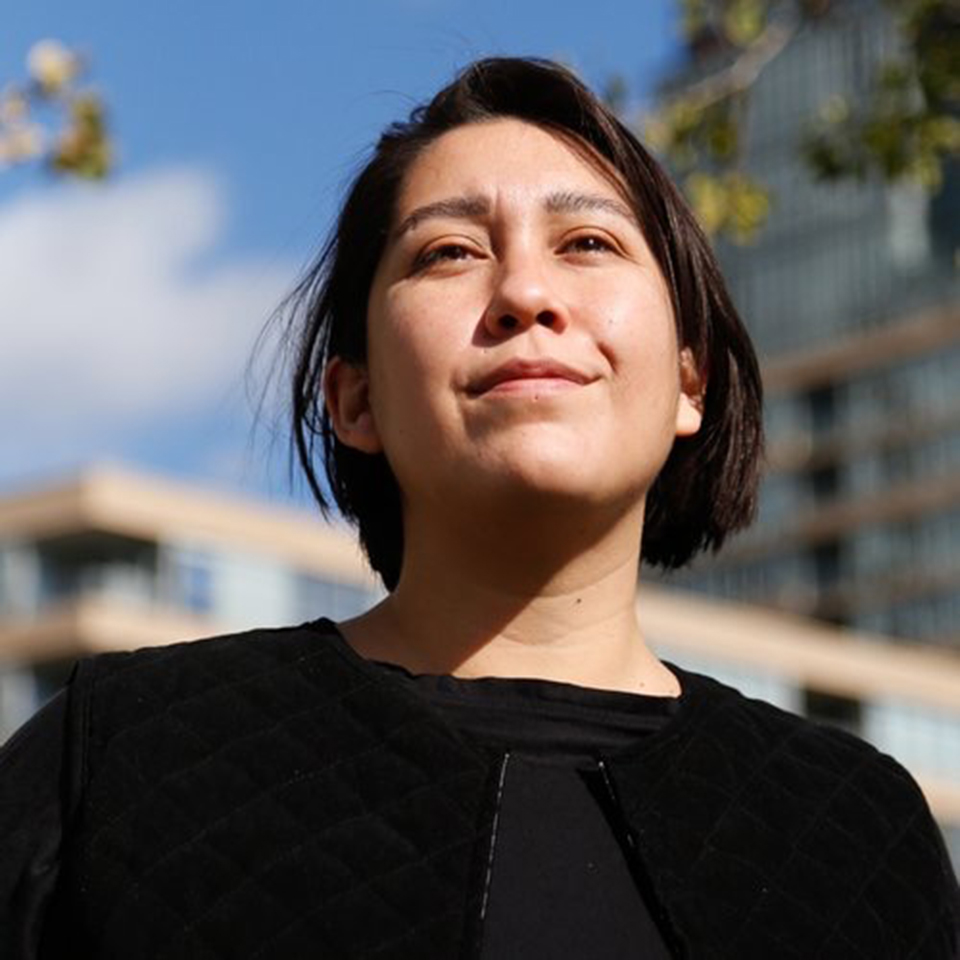Indigenous Context
By Ange Loft
In the early winter of 2018, the Biennial approached me to collaborate on a way to better understand the history of the city’s waterfront, from Etobicoke Creek to Ashbridges Bay, where the majority of its Exhibition and Programs take place. They wanted to know about the Indigenous contexts—the deeper narratives and underrepresented histories—that sit beneath Toronto.
In response, I drew upon existing research from “Talking Treaties,” a multi-year community project I’ve been leading in my role as Associate Artistic Director at Jumblies Theatre & Arts. I worked with Biennial Deputy Director & Director of Programming Ilana Shamoon, who was writing the Biennial’s first Curatorial Framework at the time, to produce an accompanying document entitled the “Toronto Indigenous Context Brief .”
The “Brief” brought together relevant research, including source texts, original interview excerpts, and oral knowledge that I had been collecting for “Talking Treaties” since 2015. It was drafted to highlight stories of interest and significance for the waterfront region, and is intended to be a living document that we can build on together for future iterations.
Toronto has been a popular place for a while. It is the site of many rivers that have been built over. Partial excavations reveal several older villages and burial places across the city, all of which have been turned over for new developments. These hidden layers tell the story of shifting populations and correspond to several historical layers outlined in the “Brief,” going back to 1000 CE. As I worked with Ilana on how to use my research to tell the story of Toronto’s waterfront, we discussed sharing space and how to make visible these layers of buried narratives.
Every time a condo goes up, they have to dig down. Exploring the changes in our city means we must also examine our foundations. How do the many Nations within our city remain in relation with one another? What agreements and arrangements do these Nations have with respect to sharing resources, space, and differences in worldviews? How do we show mutual respect for autonomy and maintain order?
Our territory has seen two drastically different approaches to these questions: the Dish With One Spoon and the Toronto Purchase.
The Dish With One Spoon outlines an approach to sharing land between Nations. The agreement has brought many regional Indigenous Nations, including the Anishinaabe and Haudenosaunee, into relation under guiding principles of mindfulness. Take only what you need. Keep the dish clean. Make sure there is something left in the dish for the future.
The agreements for this territory were not made quickly. They took time, with representatives returning to their respective communities to discuss further before coming back together for more talk. The idea of returning to agreements is foundational: oral knowledge was maintained by restating, relearning, and carrying forward ideas to the next generations.
But this place became a city fast. In 1787, the British gave the Mississaugas of the Credit what was even then very little money—2,000 gun flints, 24 brass kettles, 120 mirrors, 24 laced hats, a bale of flowered flannel, and 96 gallons of rum—and began to talk about sharing land. This interaction became known as the Toronto Purchase. The lands supposedly ceded to the British were not recorded accurately. A line was drawn by the British from Etobicoke Creek to Ashbridges Bay, and all the way up to Newmarket, outlining a much larger plot of land than what had originally been understood. The city expanded over these unclear boundary lines, encroaching on portions of the land along the rivers that had been reserved for the sole use of the Mississaugas.
As our skyline shifts to make way for taller buildings, we need to develop a keener sense of the historical relationships they are being built upon—the negotiations between Nations on this territory, and the governance mechanisms that have regulated relations on these lands.
The inaugural Biennial is driven by a question: What does it mean to be in relation? Being in relation takes time, energy, and investment to learn what is in between—what holds us up and what keeps us together. Those in-between things are not only roads and buildings, but the foundational understandings that have allowed Toronto to be here.

Ange Loft
Advisory Council, Toronto Biennial of Art

